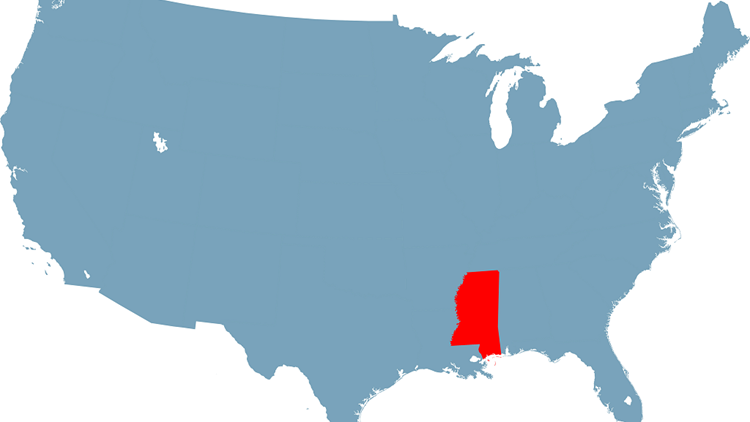by Ameritax | Sep 17, 2021 | Tax Tips and News
To help compensate for a shortage of diesel fuel in the wake of Hurricane Ida in Louisiana, the Internal Revenue Service has extended its relief measures basically allowing dyed diesel fuel to be temporarily sold and used for highway purposes.
This latest announcement extends the IRS relief, originally provided in IR-2021-176, through Sept. 30, 2021.
How does the dyed diesel fuel relief work?
In its original relief announcement on September 1, the IRS said it would not penalize taxpayers when dyed diesel fuel is sold for highway purposes or when it’s used on the highway during the period covered by the relief measure.
Dyed diesel fuel isn’t normally taxed since it’s intended for uses such as farming, home heating, and municipal bus fuel, which are exempt from excise taxes. The relief package temporarily allows road use of dyed diesel without penalty, as long as the seller or vehicle operator pays excise tax of 24.4 cents per gallon normally assessed to regular undyed fuel.
For details on reporting and paying excise tax, see IRS Publication 510, Excise Taxes.
Where is the dyed diesel fuel relief available?
The diesel fuel relief is available to taxpayers in these Louisiana parishes:
- Acadia
- Allen
- Ascension
- Assumption
- Avoyelles
- Beauregard
- Calcasieu
- Cameron
- East Baton Rouge
- East Feliciana
- Evangeline
- Iberia
- Iberville
- Jefferson
- Jefferson Davis
- Lafayette
- Lafourche
- Livingston
- Orleans
- Plaquemines
- Pointe Coupee
- Rapides
- St. Bernard
- St. Charles
- St. Helena
- St. James
- St. John the Baptist
- St. Landry
- St. Martin
- St. Mary
- St. Tammany
- Tangipahoa
- Terrebonne
- Vermilion
- Vernon
- Washington
- West Baton Rouge
- West Feliciana
For some Louisiana parishes, Tropical Storm Nicholas only added to the problems created by Hurricane Ida. So, the IRS has added the parishes of Acadia, Allen, Avoyelles, Beauregard, Calcasieu, Cameron, Evangeline, Jefferson Davis, Lafayette, Rapides, St. Landry, Vermilion, and Vernon parishes to the diesel fuel relief list covered by IR-2021-176.
Like the main list, the relief period for the additional parishes now spans from August 29 to September 30.
It should be noted, however, that the diesel fuel relief measure does not allow the road use of fuel that doesn’t comply with EPA regulations. Adulterated fuels—such as diesel with sulfur content above 15 parts-per-million—cannot be legally used in highway vehicles.
Source: IR-2021-187
– Story provided by TaxingSubjects.com
by Ameritax | Sep 15, 2021 | Tax Tips and News
Parts of Pennsylvania have been added to the list of locations eligible for tax relief measures in the wake of Hurricane Ida.
The Internal Revenue Service has now extended various tax deadlines until Jan. 3, 2022, for six counties in Pennsylvania, joining specified counties in Louisiana, New York and New Jersey previously announced as eligible for IRS relief measures.
“During this difficult time, the IRS stands ready to help victims of Hurricane Ida,” said IRS Commissioner Chuck Rettig. “We want people affected by this devastating hurricane focused on their safety and recovery for themselves and their families. To provide assistance now and in the weeks ahead, we have a variety of different types of relief available to help people and businesses affected by this disaster.”
Tax relief is available to taxpayers in any county included in a federally-designated disaster area. In Pennsylvania, this currently includes Bucks, Chester, Delaware, Montgomery, Philadelphia and York counties, although other counties and locations could be added later.
Affected counties are designated as qualifying for individual or public assistance by the Federal Emergency Management Agency (FEMA). To see a current list of eligible counties and locations, visit the disaster relief page on IRS.gov.
The tax relief extends some deadlines
By granting the tax relief, taxpayers—individuals and businesses—in the disaster areas have the deadlines pushed back to Jan. 3, 2022 to file and pay any tax due. Those with extensions that would have called for a filing deadline of Oct. 15, 2021, now have until January 3 to file.
However, if any tax is due on returns with an extension, there’s no extension for payment.
Payment of tax isn’t included in the new January 3 deadline, since those payments were due on May 17—before the hurricane struck.
The January deadline also takes in quarterly estimated income tax payments that would normally be due September 15, and quarterly payroll and excise tax returns otherwise due on November 1.
Tax-exempt organizations, businesses, partnerships and S corporations all have various deadlines extended through the relief measures.
The IRS’ disaster relief page on the agency’s website has all the details on returns, payments and other tax-related actions that qualify for the extended deadline.
The tax relief is automatic
As with the previously announced relief measures in Louisiana, New York and New Jersey, no action is needed on the part of affected Pennsylvania taxpayers to qualify for the additional time.
The IRS uses taxpayers’ address of record when a return is filed to automatically check if it is in an area qualified for relief. There’s no need to contact the IRS to sign up or to check eligibility.
Taxpayers in the designated disaster areas who get a late filing or late payment penalty notice from the IRS that has a due date that falls between Aug. 31, 2021, and Jan. 3, 2022, can call the number in their notice to have the penalty abated.
Taxpayers within the disaster area have an option on how to claim their uninsured or unreimbursed losses from the hurricane. They can either choose to claim the loss on the return for the year the loss occurred—in this case, their 2021 return to be filed next year—or they can claim losses on the return for the previous year.
No matter which option taxpayers choose to report their losses, they must write their FEMA declaration number on the return. For Pennsylvania, the number is DR-4618.
See Publication 547 for more information on reporting storm or casualty losses. For a wider scope of information on the overall coordinated federal response to Hurricane Ida, check out DisasterAssistance.gov.
Source: IR-2021-183
– Story provided by TaxingSubjects.com
by Ameritax | Sep 14, 2021 | Tax Tips and News
With the recent developments in the battle against COVID-19, health authorities are turning to tests for the virus that can be carried out at home. New clarification from the IRS now aims to spread the word that such home tests can be deducted from income taxes.
The Internal Revenue Service says the costs for home tests for COVID-19 is an eligible medical expense and as such, can be paid or reimbursed through a number of existing flexible spending arrangements, including;
- Health flexible spending arrangements (health FSAs);
- Health savings accounts (HSAs);
- Health reimbursement arrangements (HRAs); or
- Archer medical savings accounts (Archer MSAs).
Generally, taxpayers can deduct only the amount of their medical and dental expenses that totals more than 7.5% of their AGI. The deduction is reported on Schedule A (Form 1040).
In addition to home COVID tests, taxpayers can also deduct costs for personal protective equipment such as masks, hand sanitizer and sanitizing wipes. The IRS sent out Announcement 2021-7 in March that these supplies are also eligible medical expenses.
Supplies also may be paid or reimbursed through FSAs, HSAs, HRAs, or Archer MSAs.
Publication 502, Medical and Dental Expenses, has details on what medical expenses are deductible—and some that are not.
Another resource is Can I Deduct My Medical and Dental Expenses?, also found on IRS.gov.
Sources: IR-2021-181; Publication 502 (2020), Medical and Dental Expenses.
– Story provided by TaxingSubjects.com
by Ameritax | Sep 11, 2021 | Tax Tips and News
The Internal Revenue Service announced that Mississippi will now receive tax relief in the wake of Hurricane Ida, delaying some filing and payment deadlines for affected taxpayers. The Magnolia State joins a list that currently includes Louisiana, New Jersey, and New York.
“The IRS is offering relief to any area designated by the Federal Emergency Management Agency (FEMA) as qualifying for individual or public assistance,” the IRS says. “Currently, individuals and households affected by Hurricane Ida that reside or have a business in all 82 counties and the Mississippi Choctaw Indian Reservation qualify for tax relief.”
What deadlines are extended by Hurricane Ida tax relief?
The Hurricane Ida tax relief generally extends filing and payment deadlines for individuals and businesses that were due on or after August 28, 2021, until November 1, 2021, including:
- TY 2021 quarterly estimated income tax payments due September 15, 2021
- TY 2020 calendar-year partnerships and S corporation extensions due September 15, 2021
- TY 2020 calendar-year corporation extensions due October 15, 2021
- TY 2020 individual return filing extensions due October 15, 2021
Taxpayers owing certain penalties are also benefitting from this relief: “Penalties on payroll and excise tax deposits due on or after August 28, 2021 and before September 13, will be abated as long as the deposits are made by September 13, 2021.”
However, tax payments due May 17, 2021, and quarterly payroll and excise tax returns due November 1, 2021, will not be extended.
How do taxpayers in Mississippi receive Hurricane Ida tax relief?
The Hurricane Ida tax relief is automatic for Mississippi taxpayers living in the federally declared disaster area, meaning affected taxpayers don’t have to do anything to receive it. That said, qualifying taxpayers might still receive late notices related to the extended deadlines. In those situations, the IRS says the taxpayers need to “call the number on the notice to have the penalty abated.”
But taxpayers don’t necessarily have to live in the disaster area to receive the tax relief.
“The IRS will work with any taxpayer who lives outside the disaster area but whose records necessary to meet a deadline occurring during the postponement period are located in the affected area,” the agency explains. “Taxpayers qualifying for relief who live outside the disaster area need to contact the IRS at 866-562-5227. This also includes workers assisting the relief activities who are affiliated with a recognized government or philanthropic organization.”
Are there any additional resources for Hurricane Ida victims?
The IRS provides links to two additional resources that can help victims of Hurricane Ida:
- Publication 547, Casualties, Disasters, and Thefts includes instructions for claiming uninsured or unreimbursed losses from the hurricane on the current- or prior-year tax return
- gov includes assistance forms, instructions for locating local resources, and other disaster recovery information
Follow the below link to read the full IRS press release.
Source: IR-2021-180
– Story provided by TaxingSubjects.com
by Ameritax | Sep 10, 2021 | Tax Tips and News
Just as Hurricane Ida wreaked danger and misery to people from Louisiana to the Northeast, the Internal Revenue Service is expanding its tax relief for the storm’s victims.
This latest relief is targeted for taxpayers in New York and New Jersey.
“During this difficult time, the IRS stands ready to help victims of Hurricane Ida,” said IRS Commissioner Chuck Rettig. “We want people affected by this devastating hurricane focused on their safety and recovery for themselves and their families. To provide assistance now and in the weeks ahead, we have a variety of different types of relief available to help people and businesses affected by this disaster.”
The relief package follows the structure of the relief measures granted to Louisiana and the Gulf Coast earlier, with modified dates to compensate for the delay in Ida’s travel to the East Coast.
The relief package applies to taxpayers in any area that has been named by the Federal Emergency Management Agency (FEMA) as being qualified for individual or public assistance.
In New York, this currently includes Bronx, Kings, New York, Queens, Richmond and Westchester counties, and in New Jersey, it includes Bergen, Gloucester, Hunterdon, Middlesex, Passaic and Somerset counties. Other counties or localities may be added to the FEMA list. Any new locations are immediately eligible for the IRS relief once it joins the federal disaster declaration.
To check the locations currently eligible for relief, see the disaster relief page on the IRS website.
The relief delays deadlines
Like the Louisiana relief announced earlier, this newest package pushes the deadlines back to file and pay a number of varied taxes that would normally have deadlines of Sept. 1, 2021, or later.
The relief package pushes those file-and-pay deadlines back to Jan. 3, 2022. This includes taxpayers who already had an extension to file by Oct. 12; they now have until Jan. 3, 2022, to file their taxes.
It should be noted, however, that since the payment of taxes on those extended returns was due back in May—long before Ida came ashore—their payments aren’t covered by the relief package.
Also included in the expanded New York and New Jersey relief language are the quarterly estimated tax payments and excise tax returns that would otherwise be due in November.
Eligible entities for the relief measures include:
- Tax-exempt organizations, operating on a calendar-year basis, that had a valid extension due to run out on November 15, 2021
- Calendar-year partnerships and S corporations whose 2020 extensions run out on September 15, 2021
- Calendar-year corporations whose 2020 extensions run out on October 15, 2021
The IRS says it will abate any penalties on payroll and excise tax deposits that are normally due between September 1 and September 16, as long as the deposits are made no later than Sept. 16 of this year.
For a complete list of relief, payments, dates and other relief package information, see the IRS disaster relief page on IRS.gov.
No action is necessary to get the relief
The IRS relief measures are automatic; no action is needed by taxpayers to qualify. The agency uses a taxpayer’s address of record to match up with the list of federally declared disaster areas, enabling the various relief measures.
Taxpayers in the eligible disaster areas, however, who get IRS notices with original or extended filings should call the IRS—using the phone number included on the notice—to have their penalty abated.
Taxpayers, whether individuals or businesses, can claim their uninsured or unreimbursed losses either on the return for the year the loss occurred (such as the 2021 return that’s normally filed next year), or the return for the year prior to the loss (in this case, 2020).
Either way, taxpayers must remember to put the FEMA declaration number for their area on any return claiming a loss. These are:
- 4614 for New Jersey
- 4615 for New York
For more information, see Publication 547.
Check out DisasterAssistance.gov for details on FEMA and its response to Hurricane Ida.
Source: IR-2021-179
– Story provided by TaxingSubjects.com






 Ameritax
Ameritax